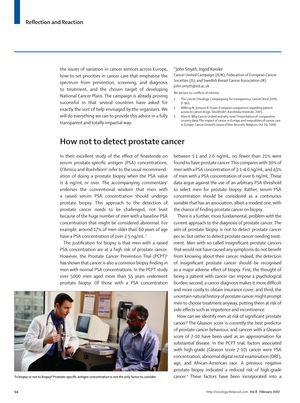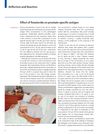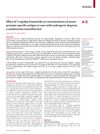How Not to Detect Prostate Cancer
February 2007
in “
Lancet Oncology
”

TLDR Using a single PSA level to decide on a prostate biopsy is not effective; a more personalized approach considering various factors is recommended.
In the document, the authors argue against the conventional practice of using a single prostate-specific antigen (PSA) concentration threshold (commonly 4 ng/mL) to decide whether a man should undergo a prostate biopsy for the detection of prostate cancer. They reference a study where over 5000 men aged more than 55 years were biopsied, revealing that prostate cancer was found in 21% of men with PSA levels between 1.1 and 2.0 ng/mL, 30% with levels between 3.1 and 4.0 ng/mL, and 43% with levels over 6 ng/mL. These findings suggest that PSA concentration should be considered as a continuous variable with a modest association with prostate cancer risk, rather than using an arbitrary cutoff. The authors also highlight the importance of detecting prostate cancer that requires treatment, as opposed to insignificant cancers that do not cause symptoms and can lead to psychological burden, insurance difficulties, and unnecessary treatment with potential side effects. They advocate for an individualized assessment of prostate cancer risk using predictive models that incorporate factors such as PSA concentration, digital rectal examination findings, age, ethnicity, prostate volume, and history of previous biopsy, to better determine the necessity of a prostate biopsy.

